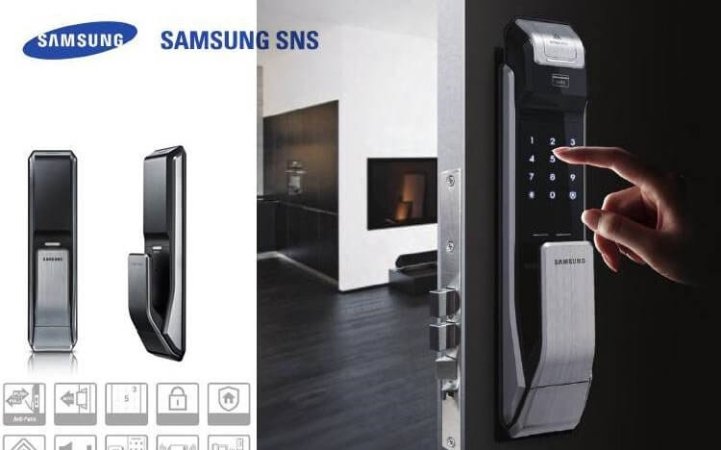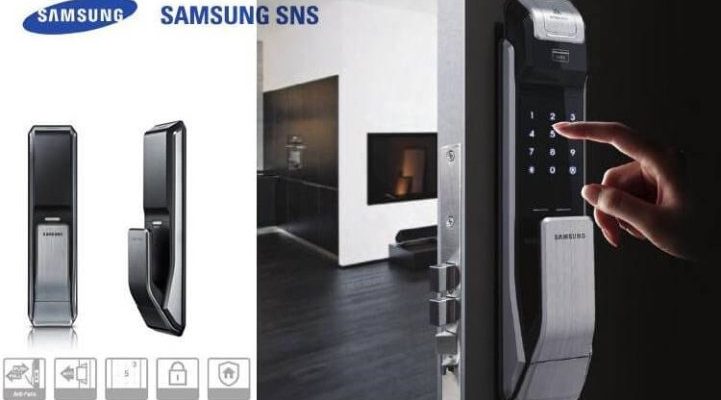
Here’s the thing: smart locks rely on more than just clever engineering. They also depend on good batteries, reliable Bluetooth or Wi-Fi, seamless syncs with your phone, and the occasional firmware update. When any one of these pieces goes off-kilter, your lock might stop listening—or at least, stop listening quickly. If you’re not a tech whiz, this can all feel pretty mysterious. But don’t worry. I’ve spent enough evenings troubleshooting slow smart locks to know the common problems (and the best fixes) for brands like Schlage, Kwikset, or even a universal smart lock controller.
How Smart Locks Communicate With Their Apps
Before going elbow-deep in troubleshooting, let’s break down how smart locks actually talk to their apps. It all starts with the connection between your phone and the lock. For most models—think Yale, August, or Schlage—your phone uses Bluetooth or Wi-Fi to send commands. Some smart locks even pair with a dedicated remote or sync up with your home’s smart hub.
Beneath the surface, the process looks something like this: When you tap “unlock,” your phone sends a signal through the app. If your lock is close, Bluetooth handles the handshake directly; if you’re farther away, the signal might hop through your home Wi-Fi, then to the smart lock bridge (a little device that manages connections), and finally to the lock itself. This all takes just a couple of seconds—if everything works.
But honestly, this is where things can go sideways. If your phone’s Bluetooth is flaky, your Wi-Fi is laggy, or your smart lock loses sync, commands hang in limbo. Picture shouting through a wall versus chatting face-to-face—that’s the difference between a smooth, direct Bluetooth connection and a struggling Wi-Fi relay. Understanding this “conversation” makes it way easier to spot where things slow down.
Why Is My Smart Lock Slow to Respond?
You might be wondering, “Is this a glitch in the lock, the app, or my phone?” Truth is, it could be any (or all) of these things. Let’s walk through the usual suspects.
- Weak Battery: A tired battery means less power for the motor and the wireless circuits. When batteries dip below a certain level, the lock still tries to function—but everything moves like molasses. If you haven’t swapped batteries in months, start there.
- Connection Issues: Bluetooth skips or Wi-Fi dropouts will absolutely slow things down. Doors between your phone and the lock, thick walls, or even metal can block those signals. If the lock uses a remote bridge, that bridge needs to be within range too.
- Outdated Firmware: Manufacturers push firmware updates to fix bugs or boost performance. If your smart lock (or its app) is running old code, things may lag. Always check for updates in the app.
- Phone Glitches: Sometimes, the problem isn’t the lock at all—it’s your phone. Too many background apps, Bluetooth hiccups, or delayed notifications can cause slowdowns.
Let me explain: it’s rarely just one issue. For example, if your phone is low on power and the lock battery is nearly toast, your command might crawl all the way from app to lock. Troubleshooting means checking each link in that chain—because your “slow” smart lock might actually be several tiny problems adding up.
Checking and Replacing Your Smart Lock’s Batteries
Here’s something most people overlook—smart lock batteries need regular TLC. Even the best code and the fanciest remote won’t help when your lock is running on fumes. If you’re seeing slow responses, low battery is one of the first things to check.
Open your lock’s battery compartment (usually right on the interior side). For Yale or Schlage locks, you’ll likely see AA or AAA batteries. If you use rechargeable ones, keep in mind they often drain faster than regular alkalines. Swap in a fresh set—not just “good enough” ones from another remote—so you can rule out battery issues.
Pro tip: If you’re jotting down troubleshooting notes, make a habit to reset or power cycle your lock after swapping batteries. Sometimes, the lock holds onto old battery data and needs a minute to adjust. Just remove the batteries for 30 seconds, reinsert them, and listen for a “wake up” chime or light. If the lock comes back to life—and the app feels faster—you’ve probably found your culprit.
Improving Your Bluetooth and Wi-Fi Connection
Now, let’s talk about the digital “highway” your lock uses: wireless signals. Smart locks usually talk to their apps over Bluetooth or Wi-Fi. If your front door feels like a dead zone for your home Wi-Fi (or your phone’s Bluetooth always drops), your lock’s gonna lag.
- Bluetooth Fixes: Stay close to the lock. I mean, really close—like arm’s reach. If the app speeds up, that’s your clue. Try toggling Bluetooth off and on in your phone’s settings, or restart your phone to clear up any wireless “cobwebs.”
- Wi-Fi Troubleshooting: If your lock uses Wi-Fi or a remote bridge, check your signal strength near the door. Thick walls, fridges, or metal mailboxes can block signals. Place a Wi-Fi extender or move your router to get better coverage. Sometimes, relocating the smart lock bridge just a few feet matters.
- Sync Issues: If your app says it’s “connecting” forever, force-close and reopen the app. Or, try syncing or pairing your lock again (your lock’s manual will tell you how). Sometimes, a simple re-pair fixes the lag.
Here’s the thing: slow response almost always means weak connection. No amount of button-mashing in the app can speed things up if the signal itself is struggling.
Updating Your Smart Lock’s Firmware and App
Ever notice how your phone asks you to update apps—sometimes at the worst possible moments? That’s not just for new features; it’s often about fixing bugs and improving performance. Smart locks are the same way. Outdated firmware or an old app can slow down command response, break pairing, or even brick your lock.
To update, open your lock brand’s app (like August, Schlage, Yale, or even a universal smart lock manager). Look for a settings menu and check for firmware updates for the lock itself. This usually takes a few minutes and might require you to keep your phone close to the lock during the update.
Insight: Firmware updates don’t just “fix” things—they also teach your smart lock new tricks. Sometimes, features like faster response, better remote syncing, or easier resetting only show up after an update.
If the app itself feels slow, check the app store for updates. Developers constantly squash bugs and improve performance. Once everything is up to date, try your lock again. In many cases, this alone solves laggy response issues.
Resetting and Re-Pairing Your Smart Lock
Sometimes, your smart lock and app just need a clean slate. If you’ve checked batteries, boosted your wireless, and updated everything but it’s still slow, a reset is worth a shot. I know—resetting can sound drastic, but honestly, it’s not as scary as it seems.
- Soft Reset: Many smart locks let you “soft reset” without losing your PIN codes or users. This usually means removing the batteries or holding a reset button for a few seconds. The lock will reboot and re-sync with your app.
- Factory Reset: If things are really haywire, check your lock’s manual for instructions on a factory reset. Be warned: this wipes all codes, settings, and paired remotes, so you’ll need to set it up as if it’s brand new.
- Re-Pairing: After resetting, open your app and go through the pairing process again. This fresh handshake usually clears out any old glitches that might be causing slow response.
Don’t skip this step just because it sounds like a nuclear option. In my experience, a quick reset and re-pair solves more mysterious issues than you’d expect—even with stubborn Schlage or Kwikset locks.
Comparing Different Smart Lock Brands and Technologies
Not all smart locks are created equal. Some rely only on Bluetooth, while others can pair with Wi-Fi, remote bridges, or even universal smart lock hubs. The type of connection can make a huge difference in response time.
- Bluetooh-Only Locks: Usually faster, since the signal goes straight from phone to lock. Downsides are short range and problems through thick walls.
- Wi-Fi or Bridge-Connected Locks: These let you control your lock remotely—handy if you travel or want to let guests in from afar. But more steps mean more chances for lag.
- Universal Smart Lock Controllers: Some folks use universal remotes or hubs to control multiple locks or brands. These can introduce a split-second delay, since commands may pass through extra devices.
If a friend’s smart lock feels instantly responsive but yours takes ages, don’t sweat it—brand and technology differences play a part. But all locks should respond in a few seconds, not a full minute. If you notice longer delays, the troubleshooting steps above will usually help (regardless of brand).
When to Call for Help With Smart Lock Troubleshooting
Let’s be honest—sometimes, you do everything “right” and your lock is still slow. That’s when it’s time to call in reinforcements, whether it’s brand support or a local locksmith who’s seen everything.
If your smart lock refuses to pair, fails to reset, or feels warm to the touch, stop and ask for help. Brands like Yale, Schlage, August, and Kwikset have decent customer support, and they’ll walk you through advanced troubleshooting steps—sometimes even code-level diagnostics. Keep your model number handy and jot down exactly what’s happening (slow response, app hangs, battery changes, and so on).
It’s tempting to throw in the towel and grab a new lock or remote, but with the right help, you can usually avoid buying extra hardware. After all, most slow responses are fixable with a little patience and the right steps.
Wrapping Up: Keeping Your Smart Lock Fast and Reliable
Living with a smart lock means trusting a tiny computer with your home’s security. If it’s slow to respond to app commands, you’re right to feel annoyed—but thankfully, most fixes are straightforward. From swapping aging batteries and tweaking your Wi-Fi setup, to syncing apps, updating firmware, or hitting reset, you’re usually just a few steps from a faster, smoother experience.
Remember: every smart lock—Yale, Schlage, Kwikset, August, or a universal hub—has quirks, but none should leave you stranded at the door. With basic troubleshooting, your remote should feel like a magic wand again, not a relic from the early internet days. Next time your smart lock drags its feet, walk through these fixes first—and if all else fails, call on a pro. Your door (and your patience) will thank you.
